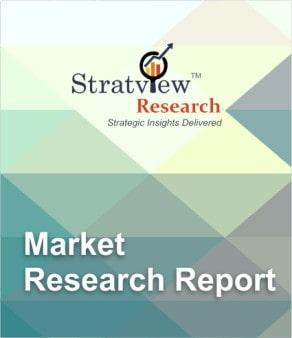Future of DNA vaccines market: Opportunities, challenges, and prospects

A DNA vaccine is a type of genetic vaccine that uses a small piece of DNA to stimulate an immune response in the body. This small piece of DNA, typically in the form of a plasmid, is engineered to contain genes that code for specific antigens that the immune system will recognize as foreign.
Once the DNA vaccine is delivered into the body, either through injection or other means, the cells in the body will take up the DNA and start producing the antigens. This triggers an immune response, which can lead to the production of antibodies and the activation of T cells, providing protection against the targeted pathogen or disease. DNA vaccines are being developed as potential alternatives to traditional vaccines, with the potential to offer improved safety, efficacy, and ease of manufacturing.
The DNA vaccines market was estimated at US$ 433 million in 2021 and is expected to grow at a CAGR of 6.18% during 2022-2028 to reach US$ ~654 million in 2028. The cancer immunotherapy segment is expected to grow rapidly, driven by the potential for DNA vaccines to stimulate an immune response against cancer cells. Emerging applications of DNA vaccines beyond infectious diseases and cancer immunotherapy, including autoimmune diseases and veterinary applications, are expected to drive further growth in the DNA vaccines market.
Request a sample here:
https://www.stratviewresearch.com/Request-Sample/3152/dna-vaccines-market.html#form
The future of DNA vaccines looks promising, with significant opportunities and challenges ahead. DNA vaccines have already demonstrated their potential in preclinical and clinical studies for a range of infectious diseases, cancer immunotherapy, and autoimmune diseases. As research continues to advance in this field, DNA vaccines are expected to have a significant impact on the future of vaccinology and public health.
Opportunities:
- Greater safety and efficacy: DNA vaccines offer a safer and more effective alternative to traditional vaccines. They are less likely to cause adverse reactions and can induce both humoral and cellular immune responses.
- Rapid development: DNA vaccines can be rapidly developed and manufactured, making them an ideal tool for responding to emerging infectious diseases and pandemics.
- Personalized medicine: DNA vaccines can be tailored to individual patients, making them a potential tool for personalized medicine.
- Veterinary applications: DNA vaccines have the potential to revolutionize the field of veterinary medicine, with applications in livestock, aquaculture, and pet health.
- Emerging applications: DNA vaccines have potential applications beyond infectious diseases, including cancer immunotherapy and autoimmune diseases.
Challenges:
- Gene delivery: One of the main challenges in DNA vaccine development is efficient gene delivery to target cells. There is a need to improve the efficiency of gene delivery systems to ensure optimal immune responses.
- Long-term safety: Long-term safety is a concern in DNA vaccine development, particularly regarding the potential for integration of the DNA vaccine into the host genome.
- Regulatory challenges: There are still regulatory challenges to overcome in the development and approval of DNA vaccines, particularly regarding safety and efficacy.
- Intellectual property rights: The protection of intellectual property rights is a concern in DNA vaccine development, with the potential for disputes and challenges regarding patent ownership.
- Public perception: Public perception of DNA vaccines may be a challenge, particularly regarding concerns about genetic modification and safety.
Prospects:
- Advancements in gene delivery technology: Advancements in gene delivery technology, including nanoparticle-based delivery systems, are expected to improve the efficiency of gene delivery and enhance immune responses.
- Development of combination vaccines: Combination vaccines that incorporate multiple antigens or target multiple diseases are expected to become more prevalent in the future.
- Collaborations and partnerships: Collaborations and partnerships between academia, industry, and government are expected to drive innovation and accelerate the development of DNA vaccines.
- Emerging applications: Emerging applications of DNA vaccines beyond infectious diseases, including cancer immunotherapy and autoimmune diseases, are expected to drive growth in the DNA vaccines market.
- Global health initiatives: Global health initiatives, including the World Health Organization's Immunization Agenda 2030, are expected to drive demand for safe and effective vaccines, including DNA vaccines.
Overall, the future of DNA vaccines looks promising, with significant opportunities for growth and innovation. However, there are still challenges to overcome, particularly regarding gene delivery and long-term safety. With continued research and collaboration, DNA vaccines have the potential to revolutionize the field of vaccinology and improve global public health.
In conclusion, DNA vaccines represent a promising area of research and development in the field of vaccinology. They have the potential to provide safer and more effective alternatives to traditional vaccines, and can be developed more rapidly than traditional vaccines due to their simplified manufacturing process. The global DNA vaccines market is expected to continue to grow, driven by increasing investment in research and development and the emergence of new delivery technologies. The infectious disease segment is expected to remain the largest segment of the market, with the potential to address unmet medical needs in the prevention and treatment of infectious diseases. The cancer immunotherapy segment is also expected to grow rapidly, offering the potential to stimulate an immune response against cancer cells. While there are still challenges to be addressed in the development and delivery of DNA vaccines, including regulatory and ethical considerations, continued innovation and collaboration hold the promise of revolutionizing the field of vaccinology and improving global public health.
- Art
- Causes
- Crafts
- Dance
- Drinks
- Film
- Fitness
- Food
- Spellen
- Gardening
- Health
- Home
- Literature
- Music
- Networking
- Other
- Party
- Religion
- Shopping
- Sports
- Theater
- Wellness
- IT, Cloud, Software and Technology


